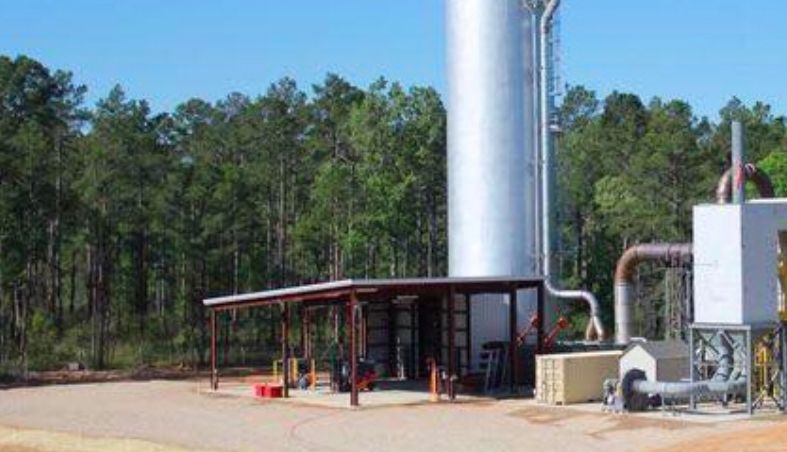
Minden will be the epicenter of the largest military burn ever conducted in U.S.
When October rolls around, four years will have passed since the explosion that rocked most of Northwest Louisiana and a portion of East Texas.
Days later, more than 15 million pounds of M6, a toxic propellant in grenades and artillery rounds was discovered by Louisiana State Police at Camp Minden located between Minden and Doyline.
The product was left behind by now-bankrupt Explo Systems Inc., a company that has now seen several top executives indicted on multiple felony charges.
Camp Minden is almost 15,000 acres in size and located in Webster Parish. The facility was formerly known as the Louisiana Military Ammunition Plant, which is a National Priorities List Superfund site primarily because of problems caused by groundwater contamination, and remediation is ongoing.
The question of what to do with millions of pounds of product that could wipe North Louisiana off the map brought about plans between the Louisiana Military Department and the Environmental Protection Agency for the largest military disposal burn of its kind ever conducted in the United States.
But thanks almost exclusively to a group called Concerned Citizens of the Camp Minden M6 Open Burn, the method of destruction went from open-air container to the construction of a multi-million dollar burn container that would protect the environment and those breathing the air for miles around Camp Minden.
The state of Louisiana entered into a contract with Explosive Service International June 17, 2015, to conduct the destruction of approximately 15,687,247 pounds of M6 propellant and approximately 320,890 pounds of clean burning igniter currently stored at Camp Minden.
The initial contract was for $19,292,648 and is expected to be increased to approximately $34-$35 million. This is based on receipt of additional funding that comes from the U.S. Treasury’s Judgment Fund on behalf of the U.S. Army for the work.
“LMD’s signing of the contract for the alternative technology for the disposal of M6 and CBI is an important achievement,” EPA Regional Administrator Ron Curry said. “We have been working closely with LMD to ensure the contractor is informed upfront of the federal and state environmental requirements that the work plan must address to protect the public.”
Concurrently, ESI was issued a Notice to Commence Work for the contract from the Office of State Procurement, and the incinerator was constructed.
It took three weeks for the newlyconstructed chamber to reach Louisiana from Oklahoma.
From there, it was transported by truck to Camp Minden. By May 12, ESI
had completed destruction of one million pounds of M6 propellant with
near zero emissions. ESI was scheduled to conduct the comprehensive
performance test on the stack emissions starting May 18.
“This
contained-burn incinerator has an advanced pollution abatement system
that ranks it among the world’s most technologically advanced
incinerators,” said Brian Salvatore, a chemistry professor at LSU
Shreveport. “I am comfortable with the LMD’s selection and agree with
the EPA’s decision to move forward with it.”
Salvatore
said he supports the stringent emissions monitoring system being
implemented to make sure this incinerator is safely operated at its
optimal capacity.
“The
NOX scrubber recommended by the EPA for the Camp Minden contained burn
is actually even better than the standard one,” Salvatore said. “This
one will use SCR [selective catalytic reduction].”
Members of Concerned Citizens and state legislators have since turned their attention to an open burn at Colfax.
“(It
is) spewing a toxic smoke of poisonous gases and unconsumed breathable
particles into the unprotected atmosphere to be dispersed as the
prevailing winds dictate, affecting life and the environment,” said
Concerned Citizens member Col. Samuel Mims.
“Representatives
Gene Reynolds and Terry Brown are sponsoring HB 11 that will forever
eliminate the open burning of toxic and hazardous waste in Louisiana.
Ryan Gatti has a companion bill in the state Senate.”
Reynolds, who authored HB 11, was instrumental in aiding the Concerned Citizens group.
HB
11 was pulled from the House May 11, but HCR118, also authored by
Reynolds, was scheduled to be heard May 31. As a “Concurrent
Resolution,” it directs the DEQ to conduct environmental testing on the
conditions when munitions are disposed of by the process of open burning
and open detonation. They must then report the results to an oversight
committee within six months and form a dialogue committee.
In addition, EPA and Clean Harbors Colfax, LLC, must form a dialogue committee within 30 days of the resolution’s adoption.
“I
believe that Clean Harbors’ 800-acre open-burn site in Colfax is on its
way to becoming Louisiana’s next superfund site,” Salvatore said.
– Bonnie Culverhouse